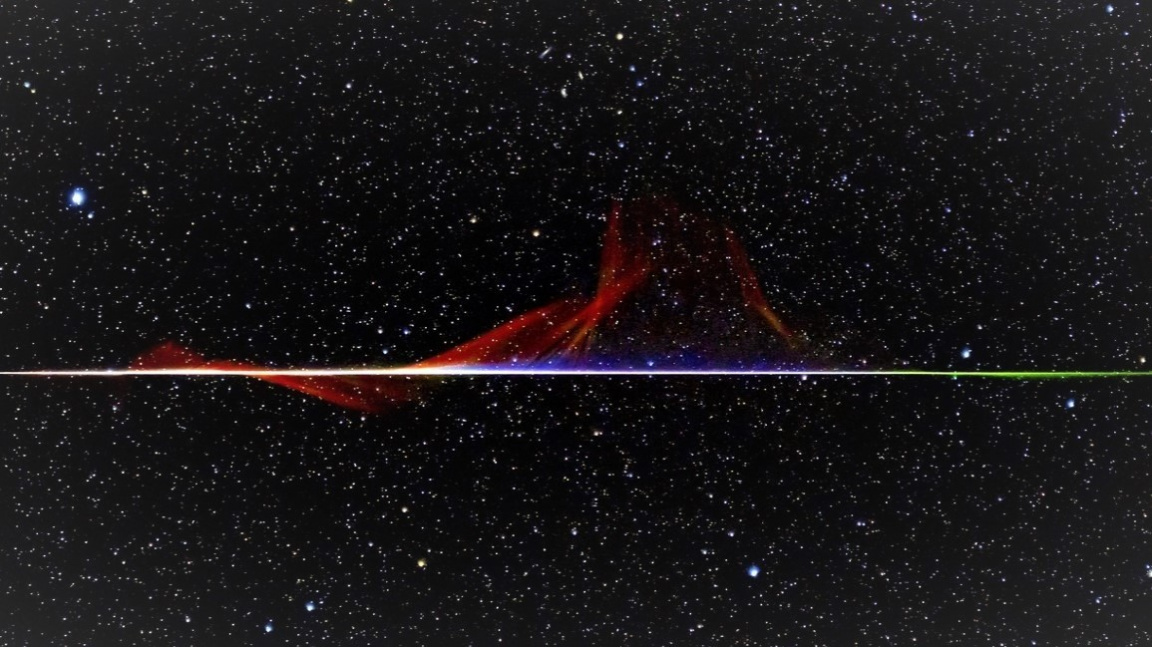Shortly after the arrival of the new year, you can watch a meteor show in the night sky. The Quadrantids, one of the three strongest meteor swarms of the year, arrived on Earth.
The first meteors from the swarm arrived on January 1. Their top however, it is still before us, will occur on the night of Tuesday, January 4. The quadrantids, which return to Earth each year, create up to a hundred glowing “stars” per hour.
It is mysterious swarm. To this day, it is not known exactly what kind of parent body it actually comes from. At first, astronomers considered Comet 96P Machholz to orbit the Sun once every 5.2 years. But then astronomer Peter Jenniskens of NASA hypothesized that it was a fragment of an extinct comet marked with the catalog number C / 2003 EH1 five centuries ago.
Maximum of the Kvadrantid meteor swarm in the Slovak Oravská Lesná in 2020. In this picture you can also see meteors in the “color version”. | source: Facebook / Petr Horálek
The swarm will culminate on Monday at 9:40 p.m. At that time, most meteoroids will enter the air. The place from which the glowing meteors will fly (radiant) lies in the constellation Shepherd. At first it will be low above the northern horizon. but then it will rise and the meteors will see better.
Meteoroid is usually a fragment of a comet (a body of ice and dust orbiting a star) or an asteroid, which changes to meteor – bright light passing through the sky. It usually burns, sometimes disintegrates and its fragments fall on the Earth like meteority. Only in rare cases does it escape Earth’s gravity.
–
Flashes of lightwhich you will see in the sky while observing the Quadrantid, are radiated energy of gases in the Earth’s atmosphere. Meteors transmit kinetic energy to gas atoms, which get rid of it in the form of photons, ie carriers of light. The meteors themselves burn by rubbing against the air molecules.
An old astronomical map from the 17th century showing the constellation Shepherd, from where the Quadrantids fly. In a painting drawn from astronomer Johannes Hevelius in the 17th century, you see the Quadratids as a shepherd holding a spear, a sickle and two dogs. The constellation of the Shepherd (Latin Bootes) lies in the northern sky and was one of the 48 constellations described by astronomer Ptolemy in the second century. Today it is one of 88 constellations defined by the International Astronomical Union. | source:
Profimedia
Cloud conditions can make monitoring conditions more difficult. But if the clouds break, the view of the swarm should be great, because the Moon will be new (new moon) shortly. At this stage, the facing part of its surface towards the Earth is not illuminated by the Sun. In other words, it is the phase when the Moon is inclined to the Earth only by the unlit side, so our natural satellite does not disturb the view of the sky with its light.
The quadrantid meteors are among the slowest – they enter the Earth’s atmosphere at a speed of 41 kilometers per second. They return every year, yet they can be called a fleeting phenomenon. Due to its gravitational action, Jupiter pushes them out of the orbit of our planet, so in less than a thousand years the Quadrantides will be just a memory for humanity.
– .


:quality(80)/cdn-kiosk-api.telegraaf.nl/2608c9e2-6c93-11ec-8eb2-02d2fb1aa1d7.jpg?resize=150%2C150&ssl=1)